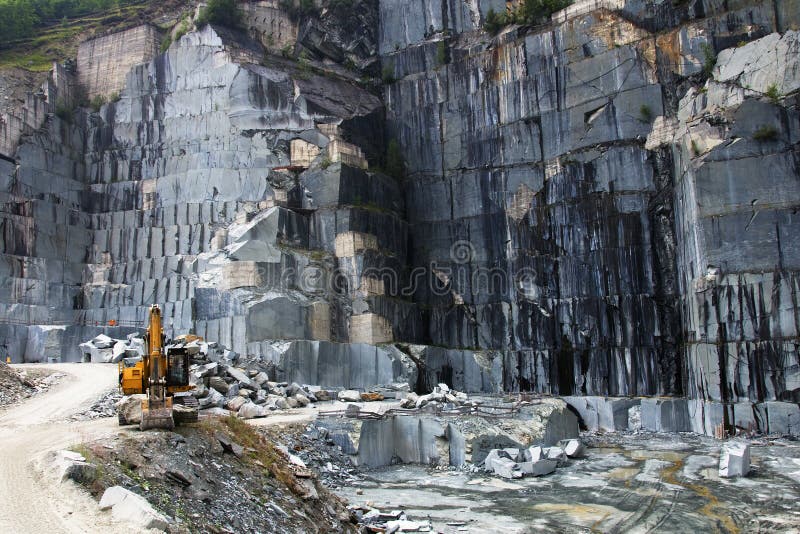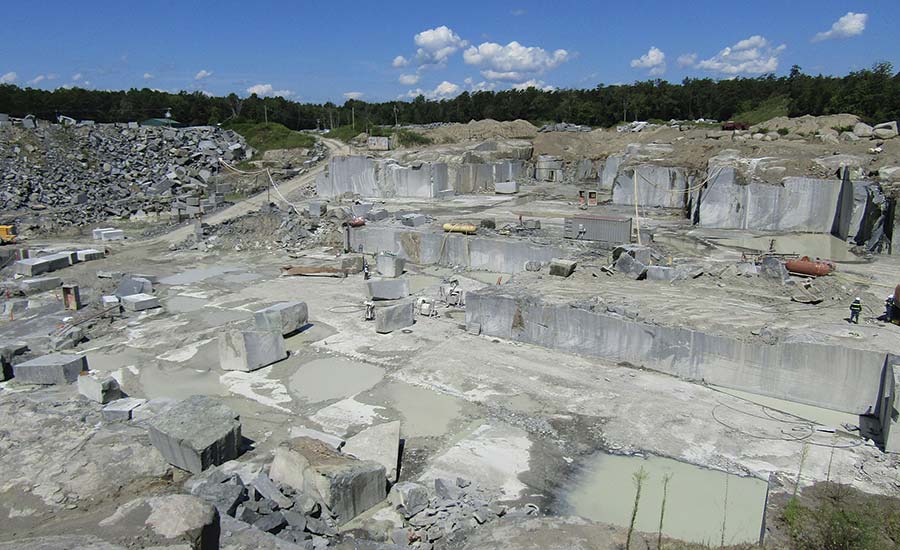Unleashing the Elegance and Resilience of Granite Quarry: A Trip With Time
Granite quarries stand as testimonies to both the geological marvels of our planet and the long-lasting workmanship of mankind. The journey via time that granite quarrying stands for is a compelling story of technology, determination, and the complex dancing in between nature and industry. Comprehending the beginnings of this age-old technique, the development of methods and devices used, and the contemporary value of granite quarrying introduces a tapestry abundant in history and significance. As we peel off back the layers of time and dig into the intricate globe of granite quarrying, we uncover a story that not only showcases the charm and sturdiness of this stunning stone but additionally drops light on the profound impact it has actually had on civilizations past and present.

The Origins of Granite Quarrying
In the record of background, the beginnings of granite quarrying can be traced back to old worlds where the quest for sturdy building products sustained the emergence of this timeless craft. From the impressive structures of old Egypt to the grandiose temples of Greece, granite has been prized for its stamina, elegance, and long life. The Egyptians, with their innovative quarrying techniques, were among the initial to remove granite widespread, using it to build huge pyramids and intricate statues that have stood up to the examination of time.
As human beings evolved, so did the methods of quarrying granite. The Romans even more fine-tuned the methods, establishing devices and equipment to essence and transportation granite over huge ranges for their architectural jobs. The longevity and visual allure of granite made it a treasured product for sanctuaries, monuments, and sculptures throughout the ages.
Today, the legacy of ancient quarrying techniques survives, with contemporary innovation enhancing efficiency while still paying homage to the craftsmanship of our ancestors. The origins of granite quarrying function as a testimony to human resourcefulness and the enduring allure of this noble stone.
Devices and Methods of Quarrying
Quarrying granite calls for specialized tools to extract the rock from the earth effectively and with accuracy. Modern quarries use diamond-wire saws, high-powered drills, and nitroglycerins to break apart the granite in a regulated manner.
Along with innovative machinery, typical hand tools are still made use of in certain quarrying operations to make certain delicate accuracy in extracting the stone. Chisels, hammers, and wedges are used by competent quarry employees to separate granite blocks along all-natural cracks, a technique that has actually been given through generations.
Additionally, strategies such as piercing vertical and horizontal openings for putting plumes and wedges, as well as the controlled use nitroglycerins in strategic areas, enable quarry workers to draw more helpful hints out granite effectively while maintaining the integrity of the stone. The harmony between contemporary innovation and typical craftsmanship is essential to the sustainable quarrying of granite for generations to find.
Development of Granite Quarries
The makeover of granite quarries over time reveals an interesting narrative of technical development and industry advancement. From old times where hands-on tools like chisels and hammers were utilized to remove granite blocks, to the commercial revolution introducing steam-powered machinery for faster quarrying, the development of granite quarries has been marked by considerable developments. In recent years, the advent of ruby cable saws and progressed boring modern technologies has actually reinvented the extraction process, permitting a lot more precise cuts and lowered waste of resources.

Granite Quarrying in Modern Times
The development of granite quarrying strategies from historical dependence more information on handbook devices to the innovative approaches of modern times highlights an amazing trip of technical development and sustainability techniques within the industry. In modern granite quarrying, advanced machinery such as diamond cord saws, high-capacity excavators, and digital boring equipment have reinvented the extraction procedure. These devices improve efficiency, accuracy, and security, enabling larger quantities of granite to be drawn out in a shorter duration contrasted to traditional approaches.
Additionally, contemporary quarrying methods prioritize sustainability and environmental stewardship - granite quarries in south africa. Firms are progressively adopting eco-friendly methods like water recycling systems, dirt reductions technologies, and rehabilitation plans for tired quarries. These initiatives aim to decrease the environmental effect of granite removal, save natural resources, and bring back quarried read landscapes to their initial state
Additionally, the integration of digital innovations like drones, general practitioner monitoring, and 3D modeling has enabled quarry drivers to maximize procedures, improve decision-making, and make certain the lasting monitoring of sources. By embracing advancement and sustainability, the granite quarrying market in modern-day times remains to thrive while maintaining environmental obligation.

Maintaining and Safeguarding Granite Quarries
In the middle of the evolving landscape of granite quarrying methods, preservation and defense of these important natural websites have actually come to be paramount worries for industry stakeholders and ecological advocates alike. As granite quarries remain to be an important source of this coveted rock, it is necessary to adopt sustainable techniques that guarantee their longevity and protect bordering environments.
Maintaining granite quarries entails implementing efficient reclamation plans to bring back the land post-extraction. granite quarries in south africa. This procedure consists of improving the surface, replanting native vegetation, and creating habitats for wild animals to prosper. By restoring quarries to their natural state, the environmental impact can be reduced, and the charm of these landscapes can endure for future generations to appreciate
Furthermore, shielding granite quarries requires applying regulations that control accountable quarrying methods. This consists of tracking water quality, managing dust discharges, and handling noise levels to reduce disturbances to the setting and neighboring neighborhoods. Collaborative efforts between market players, governmental bodies, and conservation groups are critical in promoting these requirements and ensuring the sustainable use granite quarries.
Verdict
Finally, the trip through time in granite quarrying discloses the beginnings, tools, methods, and advancement of this technique. The contemporary era has actually brought advancements in quarrying techniques, enabling the preservation and protection of these beneficial natural deposits. It is very important to continue to maintain lasting practices to make certain the appeal and toughness of granite quarries for future generations to appreciate.